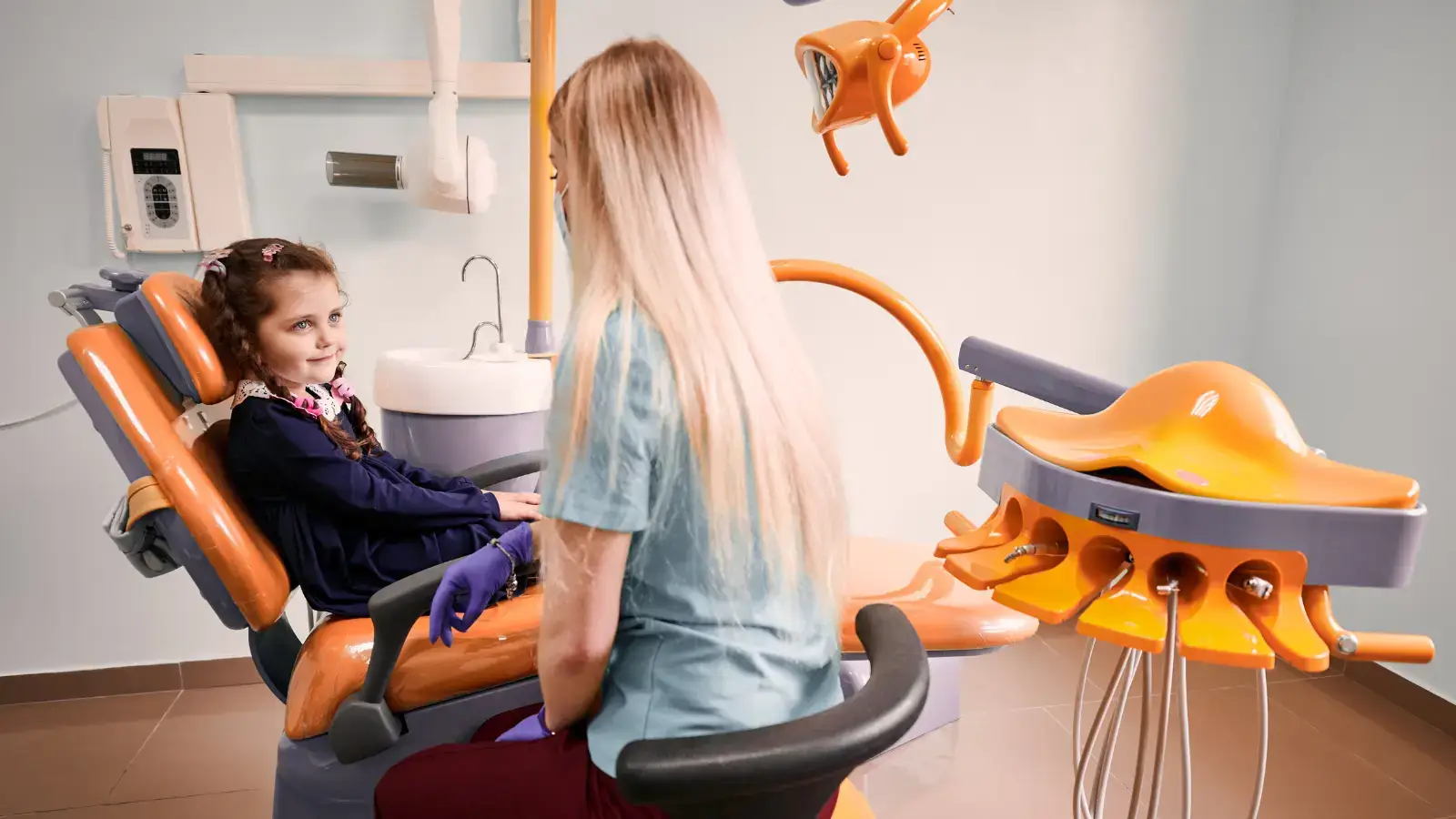Pay Online
5 Common Pediatric Dental Procedures You Need To Know

Ensuring your child maintains a healthy smile goes beyond regular brushing and flossing. Pediatric dental care is important for sustaining oral health, preventing future dental issues, and addressing any concerns that arise. Pediatric dental procedures are specifically designed to cater to the unique needs of children, aiming to make dental visits both comfortable and effective.
These procedures not only help in managing immediate dental issues but also play a significant role in establishing good oral health habits for children. From routine cleanings to specialized treatments, understanding these procedures can help you better support your child’s dental health. Here in this blog, we’ll explore five common pediatric dental procedures that every parent should know about.
5 Common Pediatric Dental Procedures
1. Dental Examinations and Cleanings
Regular dental examinations and cleanings are the main parts of pediatric dental care. These routine visits help in the early detection and prevention of dental issues.
- Examinations: During a dental exam, the dentist will check your child’s teeth, gums, and mouth for any signs of decay, disease, or other such issues. This includes checking for cavities, assessing the health of the gums, and looking for any misalignment or abnormalities.
- Cleanings: Professional cleanings means removing plaque and tartar buildup that you cannot eliminate by regular brushing and flossing. The dentist will also polish your child’s teeth to remove surface stains and leave their smile bright and clean.
- Education: These visits are also an opportunity to educate your child about proper oral hygiene practices, including brushing techniques, flossing, and the importance of a healthy diet.
Regular examinations and cleanings help to maintain optimal health of the teeth and prevent more severe dental issues from developing. Dentists recommend to schedule these visits every six months to keep your child’s teeth and gums healthy.
2. Dental Sealants
Dental sealants are known to be a simple yet highly effective procedure used to protect your child’s teeth from decay. They act as a barrier, shielding the enamel from bacteria and acids that cause cavities.
- Application: Sealants are typically utilized to the chewing surfaces of the back teeth, where grooves and pits are more susceptible to decay. The process is quick and painless, involving the application of a thin, protective coating that hardens and bonds to the tooth.
- Benefits: Sealants can significantly reduce the risk of cavities, especially in children who are still mastering their brushing and flossing skills. They are highly durable and can last for several years with proper care.
- Maintenance: While sealants provide excellent protection, regular dental visits are important to ensure they remain intact and effective.
3. Fluoride Treatments
Fluoride treatments are another preventive measure, dentists use for strengthening your child’s teeth and protect them from decay. It is a mineral that essentially helps to rebuild and reinforce tooth enamel, thus making it more resistant to acid attacks from bacteria in the mouth.
- Application: Dentists can apply Fluoride treatments in various forms, including gels, foams, or varnishes. The treatment is quick, usually taking just a few minutes during a regular dental visit.
- Effectiveness: Fluoride treatments are particularly beneficial for children, as their teeth are still developing. Regular applications can help to prevent cavities and promote healthy tooth development.
- Frequency: Your dentist will recommend the appropriate frequency for fluoride treatments based on your child’s specific needs and risk factors for tooth decay.
4. Fillings
Despite the best preventive measures, cavities can still occur. When they do, dental fillings are necessary to restore the tooth’s structure and function.
- Detection: Cavities are usually detected during regular dental examinations. The dentist will take the help of X-rays and other diagnostic tools to notify the exact extent of the decay.
- Procedure: During the filling procedure, the dentist will replace the decayed part of the tooth and refill the cavity with a suitable material, such as composite resin or amalgam. This restores the tooth’s shape and prevents further decay.
- Comfort: Modern techniques and anesthesia ensure that the procedure is comfortable for your child. The dentist will take care to make the experience as stress-free as possible.
4. Dental Crowns
Dental crowns are used for restoring and protecting a damaged or weakened tooth. This procedure involves:
- Preparing the Tooth:
The dentist will remove any decayed or damaged parts of the tooth and shape it to fit under the crown.
- Taking Impressions:
Impressions of the tooth are taken to create a custom crown that will fit perfectly.
- Placing the Crown:
Dentists often place temporary crown while the permanent crown isn’t ready. After it is ready to use, they place the permanent crown with cement onto the prepared tooth.
Final Words!
Understanding these common pediatric dental procedures can help you in ensuring your child receives the best possible dental care. By staying informed and proactive about your child’s dental care, you can help them develop a healthy, beautiful smile that lasts a lifetime. Prioritizing these pediatric dental procedures will set the foundation for excellent oral health as your child grows.





